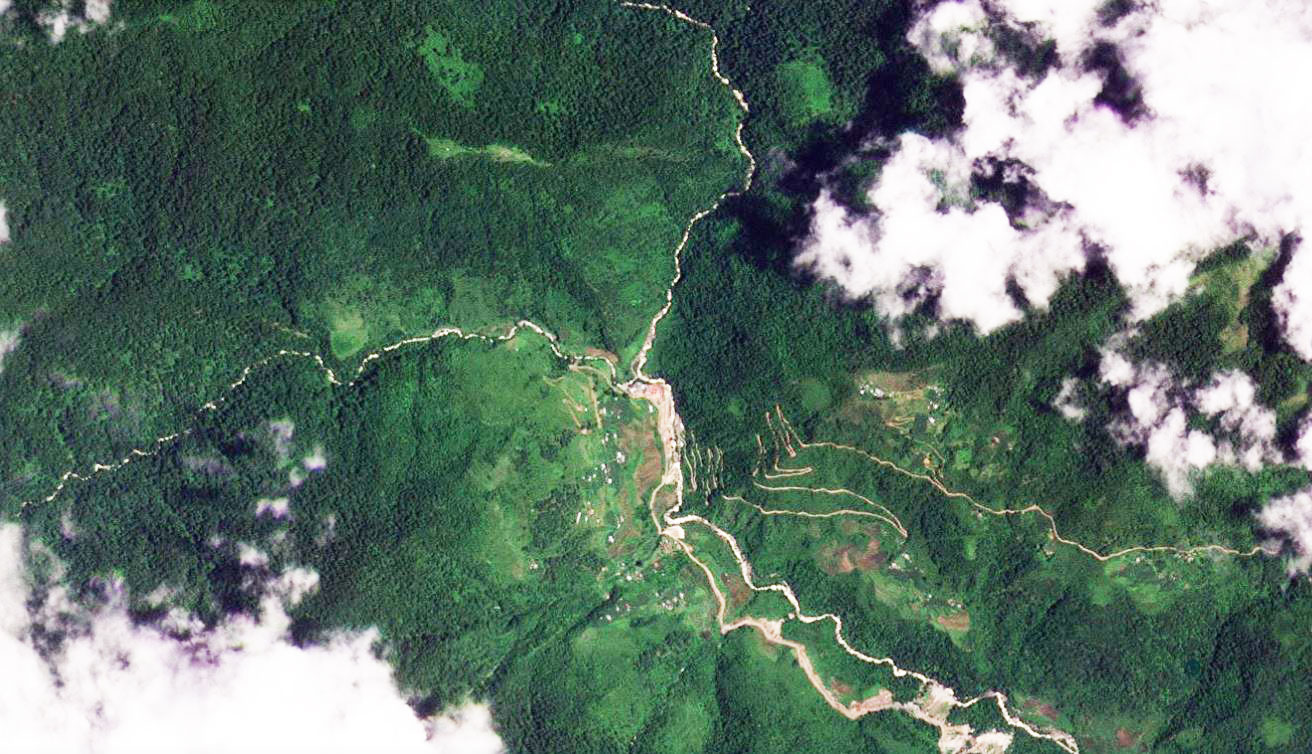Neten Dorji
UNGAR, Lhuentse – On the fateful evening of July 20, at around 7.40 pm, a calamitous flash flood struck the region of Ungar, wreaking havoc and claiming 23 lives.
The disaster was a grim reminder of the formidable forces of nature that can leave devastation in their wake.
Reports from officials of the Druk Green Power Corporation (DGPC) and gewog authorities shed light on the grim reality of the situation.
The flash flood’s origins remained shrouded in mystery until a team embarked on a challenging mission from July 24 to 31. With the aid of cutting-edge technology in the form of a drone, they were able to pinpoint the source of the catastrophic flood.
Before reaching this breakthrough, the team faced daunting obstacles. Aided by the Ungar community’s support, they ventured on an arduous hike covering over four kilometers on July 23, only to be thwarted by poor visibility and incessant rain.


July 20, 23
Determined to fulfil their mission, they regrouped and resumed their trek the next day, persevering until July 31. Their assessment revealed the grim reality of the situation.
Two major landslides near Rodungla and a sub-catchment adjacent to it were identified as the primary culprits behind the flash flood. Additionally, seven minor slides within the catchment compounded the calamity. Soil erosion was observed throughout the drainage and tributaries, further exacerbating the disaster’s impact.
Streams and riverbanks bore the brunt of this relentless force, leading to further devastation.
The flood’s devastating impact was particularly felt at the construction site of the Yungichhu hydropower project, where DGPC had set up camps for officials and workers. The torrential waters swept away several structures, including DGPC’s office, four residential blocks, a de-suup’s official quarter, three boys hostels, two girls hostels, a dining hall, a kitchen, and two toilets. Tragically, the flood also claimed the lives of 10 cattle and caused significant damage to paddy fields.
DGPC suffered substantial losses in machinery and vehicles, including excavators, air compressors, bumping machines, and more than eight private light vehicles. The extent of the financial impact is yet to be fully determined, as the comprehensive insurance companies are currently assessing the situation on-site.
The aftermath of the disaster remains a somber scene, as search crews scour the rivers’ banks in a tireless effort to recover the remaining missing bodies and equipment. Despite their best efforts, only eight of the 23 missing bodies have been found thus far, leaving 15 families anxiously awaiting news of their loved ones.
The Ungar flood stands as one of the worst disasters in recent memory, leaving the community grappling with heartache and loss. As the search and recovery efforts persist, the indomitable spirit of the Ungar community shines through, displaying resilience in the face of tragedy.
While the road to recovery may be long and arduous, the resolve of those impacted by this devastating flash flood remains unwavering.
As Bhutan continues to grapple with the impacts of climate change and extreme weather events, the lessons learned from this tragedy serve as a stark reminder of the importance of disaster preparedness and collective efforts to safeguard communities from the wrath of nature.


